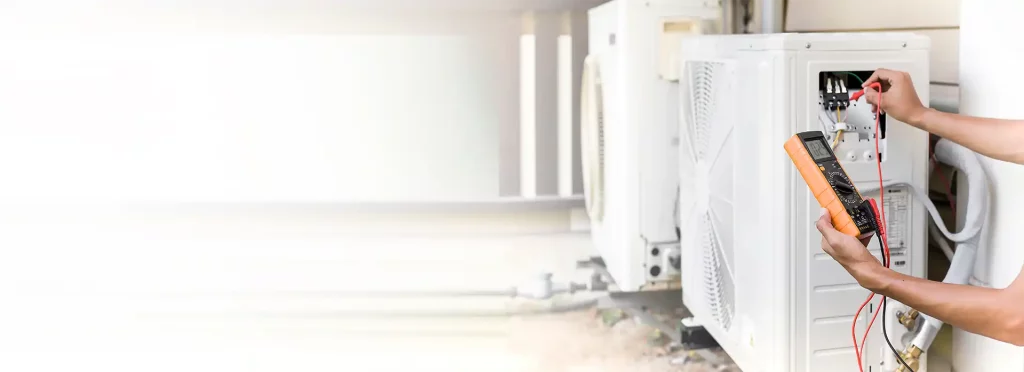
Raleigh Indoor Air Quality Services
Keep your home or buildings air quality high for a safe and healthy enviornment.
Air Quality Services
Air quality is important simply because we can’t avoid breathing in the air around us. The average adult breathes in about 20 cubic meters or 20,000 liters of air a day. Your home should be a safe and comforting place, not a potential source of illness. We spend up to 90% of our time indoors and poor indoor air quality (IAQ) at home can be a real problem in both new and older homes. Leading environmental health researchers have discovered that indoor air is often two to five times more polluted than outdoor air, and can be up to 1,000 times more contaminated in extreme cases. New carpets, fabrics, and building materials can be sources of IAQ contaminants. Older homes often have a buildup of dust, mold, and moisture problems that can cause sickness or exacerbate respiratory illnesses and allergies.
Poor IAQ problems at home can be a result of a number of common and unsuspected sources. Tobacco smoke, oil furnaces, wood stoves, gas stoves and ovens, and cleaning solvents are the usual suspects for releasing harmful pollutants in the air at home. But don’t forget about moisture, fabrics and building materials, dust, plants, and even the family pet as potential sources of IAQ problems. It is important to acknowledge the importance of IAQ and do what you can to make your living environment a healthy and happy place. That is where we can help. First, let’s take a look at what the EPA considers some of the most dangerous indoor air pollutants.
- Radon is a radioactive gas that is formed in the soil. It can enter indoors through cracks and openings in floors and walls that are in contact with the ground. Radon is the leading cause of lung cancer among nonsmokers and the second leading cause of lung cancer overall.
- Secondhand smoke comes from burning tobacco products. It can cause cancer and serious respiratory illnesses. Children are especially vulnerable to secondhand smoke. It can cause or worsen asthma symptoms and is linked to increased risks of ear infections and Sudden Infant Death Syndrome (SIDS).
- Combustion Pollutants are gases or particles that come from burning materials. In homes, the major source of combustion pollutants are improperly vented or unvented fuel-burning appliances such as space heaters, woodstoves, gas stoves, water heaters, dryers, and fireplaces. The types and amounts of pollutants produced depend on the type of appliance, how well the appliance is installed, maintained, and vented, and the kind of fuel it uses. Common combustion pollutants include:
- Carbon monoxide (CO) is a colorless, odorless gas that interferes with the delivery of oxygen throughout the body. Carbon monoxide causes headaches, dizziness, weakness, nausea, and even death.
- Nitrogen dioxide (NO2) is a colorless, odorless gas that causes eye, nose, and throat irritation, shortness of breath, and an increased risk of respiratory infection.
- Volatile organic compounds (VOCs) are chemicals found in paints and lacquers, paint strippers, cleaning supplies, varnishes and waxes, pesticides, building materials and furnishings, office equipment, moth repellents, air fresheners, and dry-cleaned clothing. VOCs, evaporate into the air when these products are used or sometimes even when they are stored. Volatile organic compounds irritate the eyes, nose, and throat, and cause headaches, nausea, and damage to the liver, kidneys, and central nervous system. Some of them can cause cancer.
- Asthma triggers are commonly found in homes, schools, and offices and include mold, dust mites, secondhand smoke, and pet dander. A home may have mold growing on a shower curtain, dust mites in pillows, blankets, or stuffed animals, secondhand smoke in the air, and cat and dog hairs on the carpet or floors. Other common asthma triggers include some foods and pollutants in the air. Asthma triggers cause symptoms including coughing, chest tightness, wheezing, and breathing problems. An asthma attack occurs when symptoms keep getting worse or are suddenly very severe. Asthma attacks can be life-threatening. However, asthma is controllable with the right medicines and by reducing asthma triggers.
- Molds are living things that produce spores. Molds produce spores that float in the air, land on damp surfaces, and grow. Inhaling or touching molds can cause hay fever-type symptoms such as sneezing, runny nose, red eyes, and skin rashes. Molds can also trigger asthma attacks.
What You Can Do
It is important to take measures to control your IAQ. Some of these include
Controlling sources of pollution- By targeting the sources of pollution, you can have more control over eliminating or limiting the emissions.
- Ventilation – Increasing the amount of fresh air brought indoors helps reduce pollutants inside. Having a functioning and efficient ventilation system is necessary to combat pollutants.
- Change filters regularly – Central heaters and air conditioners have filters to trap dust and other pollutants in the air. Make sure to maintain your indoor air system to prevent buildup of pollutants.
- Adjusting Humidity – The humidity inside can affect the concentrations of some indoor air pollutants. For example, high humidity keeps the air moist and increases the likelihood of mold.
What We Can Do
At Air System Services, we can help keep your home comfortable and healthy. We are experts in maintaining high indoor air quality. From installing top-of-the-line ventilation systems to restoring and optimizing your existing system, we can meet all of your air quality needs. Our trained specialists know the ins and outs of heating and air systems for homes and businesses. We can diagnose issues with your current system and repair them, and then provide regular maintenance to keep your system functioning at its highest quality.
Contact Us About Our Indoor Air Quality Services
Call 919-266-5755 or by filling out our form below to learn more about how Air Sytem Services can help improve your Indoor Air Quality.
